
Interviews with People Inspired by Oz
Hosted by The Daily Ozmapolitan

Silver Shoes/Golden Bricks
A Conversation with Paul Miles Schneider
Paul Miles Schneider has written a contemporary action-adventure story in which a young boy acquires one of the ancient Silver Shoes that Dorothy lost over Kansas during her return from Oz. I talked with Paul about his many and varied personal experiences with Oz...
 WW:
Did growing up in
Kansas have an impact on
your love for Oz?
WW:
Did growing up in
Kansas have an impact on
your love for Oz?
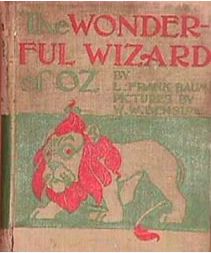 WW: I
understand your grandfather had several early editions of the Oz books.
How did you come to read them as a child?
WW: I
understand your grandfather had several early editions of the Oz books.
How did you come to read them as a child?
PS: Before I learned to read myself, my mother
would sit by my bed and read them to me, always stopping to enjoy the
beautiful illustrations. She told me these books had been her father’s
when he was a little boy. I loved the personal inscriptions from my
long-departed relatives that were scrawled inside the front covers:
“Merry Christmas, Love Aunt Jo, 1906.” Things like that. Later, the
books were given to my mother when she was a young girl. Then they were
passed along to me. It was one of the first “legacies” that I recall.
It felt very important to me at the time, and it still does. I have
them proudly displayed on living room bookshelves today. Most aren’t in
great shape. They’ve been poured over and loved by eager fingers and
hands for more than a hundred years now. Still, to me, they’re
priceless.
WW: Your grandfather worked
in Hollywood and your parents did stage work as well. Does your family
have any stories of working with the stars?
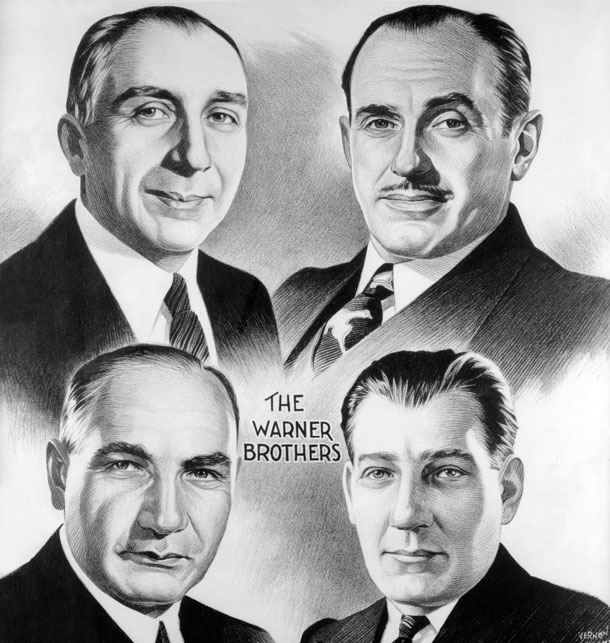 My
grandfather shared a great deal of success with them and was soon a top
executive there. Today, you would say he was their CFO. He determined
the budgets for all the films as well as the stars’ salaries.
My
grandfather shared a great deal of success with them and was soon a top
executive there. Today, you would say he was their CFO. He determined
the budgets for all the films as well as the stars’ salaries. One of my grandmother’s best friends was Joan Crawford. The last movie my grandfather worked on at Warners was the 1954 musical version of A Star Is Born, After production finished on the film, my grandparents sailed to Europe with Judy Garland and Sid Luft, staying at the same hotel with them in London, etc. And my aunt, who was a teenager at the time, kept an eye on Liza for them during the crossing. Unfortunately, this glamorous era happened years before I was born. I wish I had known my grandfather a little better. I was barely eighteen when he passed away, and I had just started asking him specific questions about his life and work. I inherited his gold watch after he died, and I still wear it today. It’s the watch Jack Warner gave him when he retired from the studio. When I was born in New York City, my father was working as a cameraman on The Patty Duke Show. My mother was an actress and had appeared on Broadway in Miss Lonelyhearts with Pat O’Brien, Fritz Weaver, Ruth Warrick, and Anne Meara. She did a second Broadway play with Sal Mineo. And she also worked on live television dramas during the Golden Age with people like Peter Ustinov, Sandra Church, and Robert Preston. After my parents divorced in the mid-’80s, she married her second husband, Brooks Clift. He was the brother of movie star Montgomery Clift. I know this sounds a little crazy coming from a guy who grew up in Kansas. It was probably even more bizarre to the people living around us at the time. I remember once when Jason Robards came to our house for dinner. That’s not so unusual if you live in Hollywood or New York, but it’s a little out of the ordinary for a college town in Kansas.
WW: You
and Margaret Hamilton were pen pals for quite awhile. What was the
Wicked Witch of the West like underneath the makeup?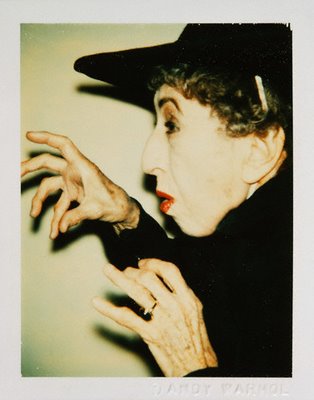
WW: You’ll be doing a book signing with several other Oz authors and celebrities in late April, 2009. Have you attended other Oz events over the years?
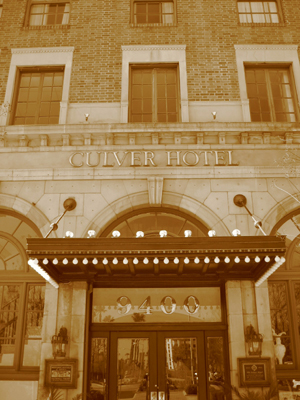 upcoming
South Winkies gathering in Glendale, CA. I’ve been an
on-again-off-again member of the IWOC for many years. I first joined as
an eager teenager in the mid-1970s. I still have my Baum Bugles and
Oziana magazines. About a dozen years ago, I attended a large
celebration of the surviving Munchkins at the Culver Hotel in Culver
City. I have autographed photos from that day, framed and hanging on
the wall. One of the coolest Oz events I ever attended was as a kid in
Kansas, when a horse trainer hired for the MGM Oz film came through our
town. I have photos of me riding a pony. It’s one of the two black
ponies that pulled Dorothy around the big Munchkinland set in her
flower petal carriage. And it’s the same pony Rhett Butler fatefully
gave to his daughter Bonnie Blue in Gone With the Wind. It’s funny,
though. Looking at this upcoming Oz event in Glendale, and surfing
around online through the IWOC website, I’m seeing the names of a few
dedicated fans and officers of the club that I recall seeing on the
rosters when I first became a member. I hope I get to meet them someday
soon. It would be quite a thrill for me.
upcoming
South Winkies gathering in Glendale, CA. I’ve been an
on-again-off-again member of the IWOC for many years. I first joined as
an eager teenager in the mid-1970s. I still have my Baum Bugles and
Oziana magazines. About a dozen years ago, I attended a large
celebration of the surviving Munchkins at the Culver Hotel in Culver
City. I have autographed photos from that day, framed and hanging on
the wall. One of the coolest Oz events I ever attended was as a kid in
Kansas, when a horse trainer hired for the MGM Oz film came through our
town. I have photos of me riding a pony. It’s one of the two black
ponies that pulled Dorothy around the big Munchkinland set in her
flower petal carriage. And it’s the same pony Rhett Butler fatefully
gave to his daughter Bonnie Blue in Gone With the Wind. It’s funny,
though. Looking at this upcoming Oz event in Glendale, and surfing
around online through the IWOC website, I’m seeing the names of a few
dedicated fans and officers of the club that I recall seeing on the
rosters when I first became a member. I hope I get to meet them someday
soon. It would be quite a thrill for me.
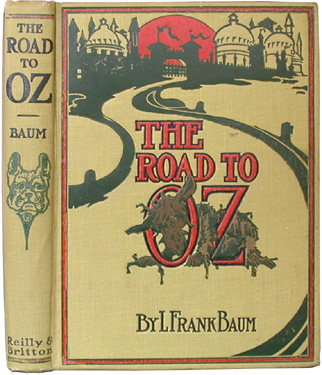 PS: If
I had to pick just one, which isn’t easy, I would say The Road to Oz. I
remember it felt like such a delightful, celebratory party the first
time I read it. I adore the characters of Polychrome, Button Bright and
the Shaggy Man. And the appearance of Santa Claus! I also think John R.
Neill truly outdid himself with those illustrations. I was so
captivated with his work on this particular book that I created my own
acrylic painting from one of his drawings when I was sixteen. I was
truly inspired.
PS: If
I had to pick just one, which isn’t easy, I would say The Road to Oz. I
remember it felt like such a delightful, celebratory party the first
time I read it. I adore the characters of Polychrome, Button Bright and
the Shaggy Man. And the appearance of Santa Claus! I also think John R.
Neill truly outdid himself with those illustrations. I was so
captivated with his work on this particular book that I created my own
acrylic painting from one of his drawings when I was sixteen. I was
truly inspired.
WW: If you were to produce an interactive menu for the MGM DVD, what would it look like?
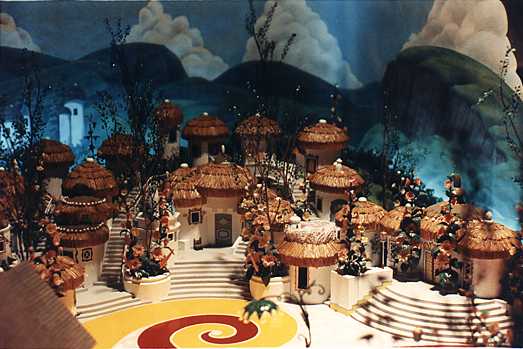 The camera rises
up, panning over a faithful recreation of the famous set and locks off
right next to the Yellow Brick Road. Viewers could select from several
of the tall flowers, or the Munchkins hiding in the bushes, or the
small doors and windows on the fronts of the huts, etc., These would
activate the submenus for Languages, Special Features, and Scene
Selections. Then, for example, if a viewer clicked on a door, it would
open up to reveal a parade of trumpeting Munchkin soldiers followed by
the mayor himself, who would tip his hat and point to an expanding list
of Deleted Scenes. I can tell you now, you don’t want to hear the cost
on this one!
The camera rises
up, panning over a faithful recreation of the famous set and locks off
right next to the Yellow Brick Road. Viewers could select from several
of the tall flowers, or the Munchkins hiding in the bushes, or the
small doors and windows on the fronts of the huts, etc., These would
activate the submenus for Languages, Special Features, and Scene
Selections. Then, for example, if a viewer clicked on a door, it would
open up to reveal a parade of trumpeting Munchkin soldiers followed by
the mayor himself, who would tip his hat and point to an expanding list
of Deleted Scenes. I can tell you now, you don’t want to hear the cost
on this one!
WW: Having worked on several film to DVD projects, why do you feel that virtually all film adaptations of Oz other then the MGM film have failed?
WW: Several pairs of Ruby Slippers were created for Judy Garland to wear in the MGM film. Obviously, L. Frank Baum used silver ones in his novel. If for a moment we believe that Oz is a real place, why do you think the silver shoes were first created and by whom?
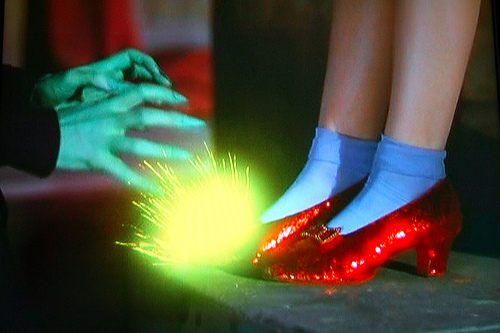 PS: Aha! Well, I definitely
don’t want to spoil my book by giving you too detailed of an answer
here. The premise of my novel is that Oz does, in fact, exist. I take
the reader on a mysterious, sometimes frightening, and sometimes
rousing journey of discovery. Things start simply enough and then grow
more complex and fantastic as the plot develops. Information about the
shoes isn’t revealed all at once, but rather in stages—like fitting
together the pieces of a puzzle. The characters in the book are trying
to figure all of this out as best they can with the limited resources
they have. Traditional Oz fans might be surprised by some of the
creative twists and turns along the way. But I will say that I do go
into the historical background of the shoes, from an outsider’s
“realistic” perspective looking in. The reader will increasingly gain
knowledge of the origin of the Silver Shoes, their vast history, and
their incredible powers with every turn of the page.
PS: Aha! Well, I definitely
don’t want to spoil my book by giving you too detailed of an answer
here. The premise of my novel is that Oz does, in fact, exist. I take
the reader on a mysterious, sometimes frightening, and sometimes
rousing journey of discovery. Things start simply enough and then grow
more complex and fantastic as the plot develops. Information about the
shoes isn’t revealed all at once, but rather in stages—like fitting
together the pieces of a puzzle. The characters in the book are trying
to figure all of this out as best they can with the limited resources
they have. Traditional Oz fans might be surprised by some of the
creative twists and turns along the way. But I will say that I do go
into the historical background of the shoes, from an outsider’s
“realistic” perspective looking in. The reader will increasingly gain
knowledge of the origin of the Silver Shoes, their vast history, and
their incredible powers with every turn of the page.
WW: Why did you choose the name Donald Gardner for your lead character? Does it have some hidden meaning?
WW: Do you have plans to write another Oz book?
PS: I definitely do. I was hoping people would
enjoy this first book, but the initial feedback on Silver Shoes has
been even better than I anticipated. One of the things people tell me
right away is, “I want to know what happens next!” Without spoiling the
plot, my novel ends with a huge possibility for a continuation. When I
was first working on it, I struggled endlessly to tie up every loose
end in a neat little package. I wanted to answer all possible questions
that readers and I myself might pose along the way. And when I finished
a rough draft of the last two chapters, it felt completely wrong.
Everything was planned and symmetrical and dull, and it knocked the
excitement right out of the story. I think the ending I have now leaves
readers quite satisfied. The main conflict comes to a climactic
conclusion, but in a way, you might say this is just the beginning for
Donald and the others. Hopefully, readers will want to know what
happens next. And more about Oz, of course. And yes, I’m pleased to
tell you that I have already begun work on a second book, picking up
this story right where the first one leaves off.
WW: If you were to either meet L. Frank Baum or go to Oz for a day, which would you choose?
 PS: Meeting the man
himself would be a life-changing experience, but I would definitely
choose the latter and go to Oz for a day. I’ve dreamed about it for as
long as I can remember. Some of my earliest conscious memories are
those dreams, in fact. And now I have written my own modern tale about
the “actual” existence of Oz. It’s my ultimate tribute to L. Frank Baum
and his brilliant imagination. Now I’ve added my own imagination into
the mix. And I hope it’s the beginning of a series of exciting new
adventures for another generation of fans. ∆
PS: Meeting the man
himself would be a life-changing experience, but I would definitely
choose the latter and go to Oz for a day. I’ve dreamed about it for as
long as I can remember. Some of my earliest conscious memories are
those dreams, in fact. And now I have written my own modern tale about
the “actual” existence of Oz. It’s my ultimate tribute to L. Frank Baum
and his brilliant imagination. Now I’ve added my own imagination into
the mix. And I hope it’s the beginning of a series of exciting new
adventures for another generation of fans. ∆
 Paul Miles Schneider was born in New York City and
raised in Lawrence,
Kansas. At various times he has been an actor, writer, composer,
singer, and arranger. He currently lives in Los Angeles, where he
produces and designs DVD menus and interactive content for over 200
films
& TV shows, as well as over 40 Blu-ray Discs, working on such
titles as "Star Wars III," "Casino Royale," "Fight Club," "Baron
Munchausen," "Life of Brian," "Buffy" (TV), "Men In Black," "Spinal
Tap" and "Harry Potter." Paul can be
reached through www.paulmilesschneider.com
Paul Miles Schneider was born in New York City and
raised in Lawrence,
Kansas. At various times he has been an actor, writer, composer,
singer, and arranger. He currently lives in Los Angeles, where he
produces and designs DVD menus and interactive content for over 200
films
& TV shows, as well as over 40 Blu-ray Discs, working on such
titles as "Star Wars III," "Casino Royale," "Fight Club," "Baron
Munchausen," "Life of Brian," "Buffy" (TV), "Men In Black," "Spinal
Tap" and "Harry Potter." Paul can be
reached through www.paulmilesschneider.com
Silver Shoes
was
published on February 23, 2009 by iUniverse.com
Blair Frodelius lives in upstate New York and is the
editor of The
Daily
Ozmapolitan, The Ozmapolitan Express and OzProject.com. He can be
reached at
blair@frodelius.com

